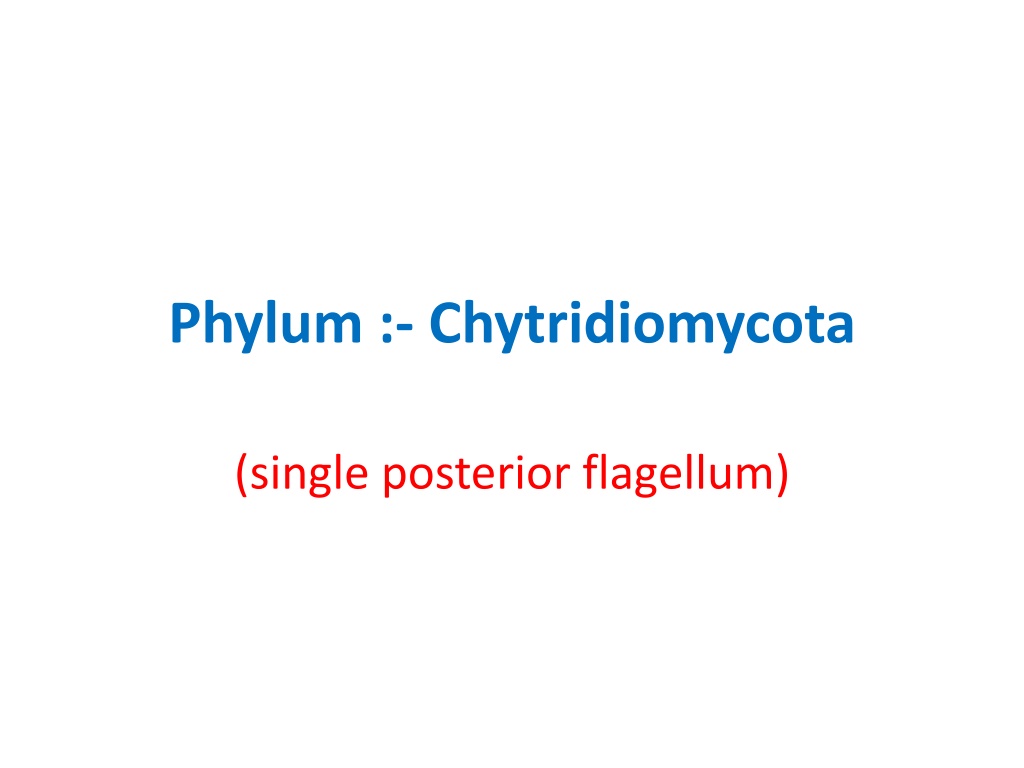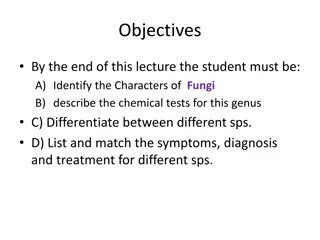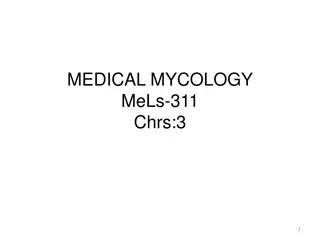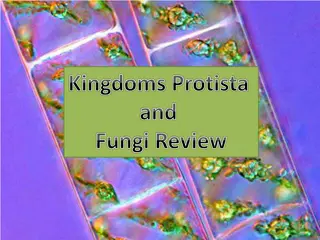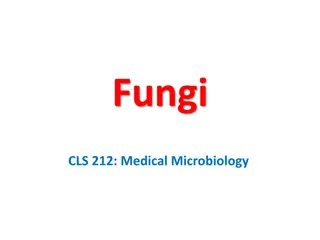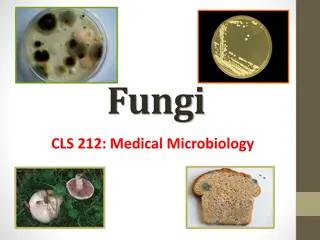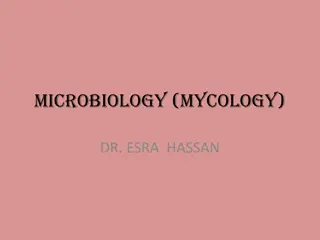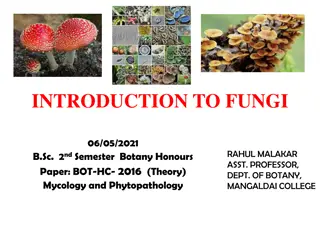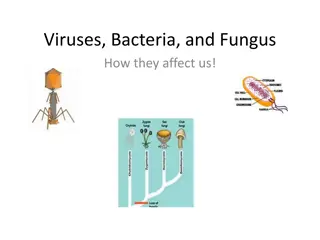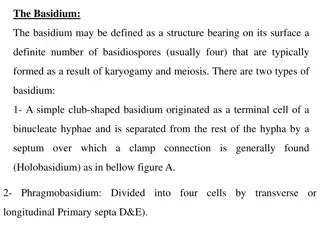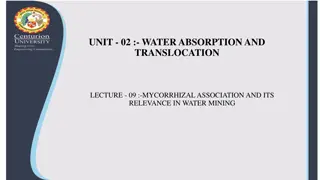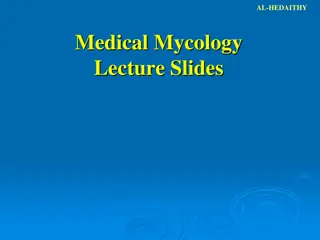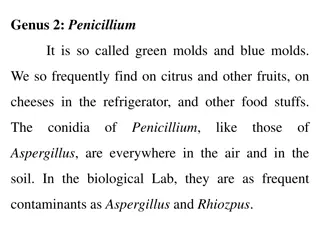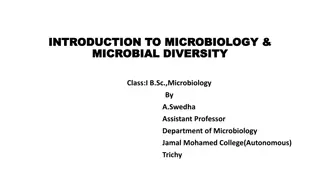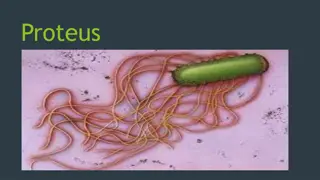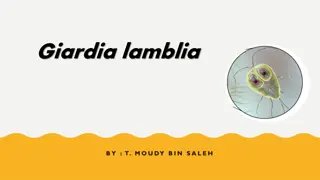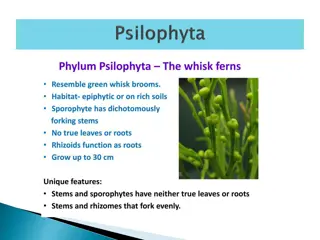Understanding Chytridiomycota: The Flagellated Fungi
Chytridiomycota is a phylum of fungi distinguished by having motile spores with a single posterior flagellum. They are primarily aquatic, parasitic on algae and animals, and play a role in plant diseases. Their unique characteristics include alternation of generation and somatic phase with rhizoids. Reproduction occurs asexually through zoospores. Learn more about these lower fungi and their ecological significance in this informative overview.
Download Presentation

Please find below an Image/Link to download the presentation.
The content on the website is provided AS IS for your information and personal use only. It may not be sold, licensed, or shared on other websites without obtaining consent from the author. Download presentation by click this link. If you encounter any issues during the download, it is possible that the publisher has removed the file from their server.
E N D
Presentation Transcript
Phylum :- Chytridiomycota (single posterior flagellum)
Chytridiomycota Aphylum of fungi (kingdom Fungi) distinguished by having zoospores (motile spores) with a single, posterior, whiplash flagellum. Species are microscopic in size, and most are found in freshwater or wet soils. Most are parasites of algae and animals or live on organic compounds (as saprobes). A few species in the order Chytridiales cause plant disease, and one species, has been shown to cause disease in frogs and amphibians
Many studies were shown most fossils of fungi belonged to Chridiomycota and This confirms that this is a fungus that first appeared Which is believed to have evolved from flagellated protista . The individuals of this kingdom also is called lower fungi or phycomycetes that is forming a septated hyphae (coenocytic ) . The Chytridiomycota, often called chytrids, are unique among all fungi in having motile spores in their life cycles , The phylum has a single class, the Chytridiomycetes
1- not known to occur. 2- Chytridiomycota feed on both living and decaying organisms. They are heterotrophic and absorptive nutrition 3- They are mostly aquatic, and not terrestrial. 4- Sexual reproduction is variable and may be isogamous, anisogamous or oogamous. 5- Asexual reproduction by zoospores have a single, posterior whiplash flagellum. 6- Some individuals have alternation of generation in their life cycle 7- Somatic phase consists from unicellular with rhizoids or multicellular (mycelium with a septated hyphae ). Cell walls are made of chitin and glucan , cellulose is
Rhizoids : somatic phase or thallus , root like structure having protoplasm without bearing vegetative structures (zoosporangia) some rhizoids bearing one zoosporangium per thallus Monocentric .Others produce zoosporangia Polycentric The benefit of rhizoids to confirm thallus surface of feed and increase surface area for absorption of nutrients it is a part of nuclei multiple on the
8- Some individuals are causing plant diseases such as Synchytrium endobioticum causes black warts of potato.
Reproduction of Chytridiomycota Asexually, Chytridiomycota reproduce through the use of zoospores. In asexual reproduction, zoospores release from zoosporangium within a pore at the top of zoosporangium called Operculum located a fresh substrate each will eventually lose its flagellum , The nucleus undergoes several Mitotic Divisions - resulting in a Multinucleate.. Finally, cleavage of the protoplasm occurs, which produces individual zoospores that are released through a pore. then will swim until
Sexual reproduction is Haploid dominant. It also depends on alternation of generations in most individuals {alternate between Sporothallus which is considering asexual cycle (2n) and Gametothallus sexual cycle (1n)} . The haploid thallus, called the gametothallus, produces female and male gametes. These occur in pairs and are terminal and sub terminal. Male gametes are orange-colored, while female gametes are colorless. In addition, female gametes are much larger than male gametes. The Diploid thallus is called the Sporothallus. The sporothallus produces two types of zoosporgia: zoosporgangium (meitosporangium) and resistant sporangium (meiosporangium). Zoosporangia produce diploid zoospores, which can function as a means of asexual reproduction. while meiosporangium produce haploid zoospore after suffering meiosis division , Sexual reproduction may be isogamous, anisogamous, or oogamous.
